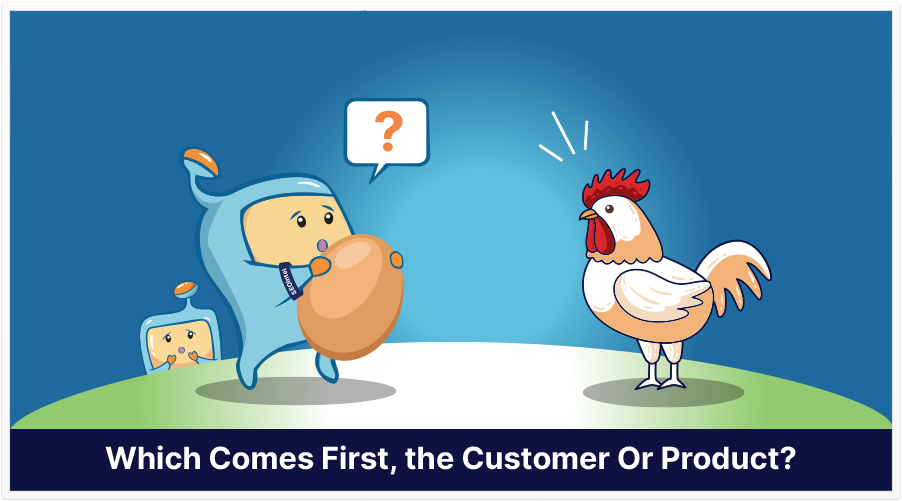
If you’ve studied basic marketing, you’ve probably heard some variation of this anecdote:
A person or a company gets an idea for a product.
They think it’s a great idea, and they think of nice features, cool colors, and great designs for that product.
Their minds are filled with grand visions of how well this product will sell.
Finally, the big day arrives: the launch of their product.
It’s a flop.
They soon learn that they weren’t the first ones to think of a product like this.
A very similar product had been launched before, and it failed because, apparently, there was no market for it.
There was no one who was aware of the problem it solved, no one who was searching for it (or interested), and certainly no one who was waiting enthusiastically for that product.
Now, while my retelling of that anecdote might be a bit extreme, I’m sure that similar incidents have occurred.
And the point of this anecdote is, of course, to show the importance of research–not just product research, but customer research.
Recently, there have been a number of articles, written on authority sites, that have re-iterated the time-tested principle of the customer-first approach to business. And in today’s post-pandemic world, where almost everything has gone digital, it’s even more important that we visit this idea now.
Does The Customer Really Come First? A Re-Thinking of the Product Design Process
One of these recent articles is A must-have for today’s businesses: A customer-first obsession, by Janelle Estes, and it’s a read that can make you rethink customer research, particularly from a software development perspective.
Here’s how I’d summarize it: instead of doing customer research first, as a single, separate stage, followed by the second stage of product development, the two stages are woven together in a sort of back-and-forth process. Customer research-product development-customer feedback-product development, and so on.
So, sequentially, it almost doesn’t really matter which comes first, because with this approach, the customer and the product are almost two sides of the same coin. You won’t get far into product development without research and feedback from potential customers, and even with such feedback, once you get to a certain point in development, you may need more feedback.
Now, if you’re thinking that that approach is very time-consuming, it can be, and depending on the nature of your product, it may be a bit prohibitive. That’s why I implied that this approach is suitable from a software development perspective. You can put beta versions of your software online, have people try it out, and get rapid feedback. That’s much faster than…say…having to ship something in the mail.
In fact, you don’t even have to be developing software to use this approach.
Let’s say you’re creating a new version of your website. Why not have a number of real users use the pre-release version of your site, give you feedback, and move on from there? (This brings us to something called user experience, or UX, and is basically a web design philosophy.)
And why have feedback end with your product’s finalization?
You can continue gaining feedback to improve your product and create future iterations. That’s one of the points mentioned in another recent article, which was published on Forbes, titled, 6 Things Customer-Centric Companies Do Differently.
So, now you know why I said earlier that the customer-vs-product-first question might be a trick one.
But, let’s go even further, because the customer-product dichotomy can actually be blended into a nearly seamless dynamic.
It’s One Thing to Start With the Customer. It’s Another Thing to Go Beyond: What’s The Experience They Seek?
Years ago, I learned something profound: customers don’t really want a product per se, they want the experience that the use of that product (or service or opportunity) gives them (or, the painful experience it helps them avoid).
Think about it: do you want that basketball hoop just for the sake of having a basketball hoop, or do you want it so that you can experience the thrill of knowing you made a shot?
Conversely, do you want that smoke detector for the sake of having one, or do you want one so that you can avoid the devastating experience of losing a loved one?
That’s what I mean when I talk about experience: there are experiences that people seek, and experiences that people want to avoid. (And it’s been said that people will do more to avoid bad experiences than experience good ones.)
It’s been stated there are 2 primal motivations: to move away from something (pain) and to move toward something (pleasure). This is known as the pain-pleasure principle.
You may not agree with Freudian psychology, and I’m certainly not condoning fear-based marketing, but the pain-pleasure principle may be a viable paradigm to use when trying to understand your audience.
(It doesn’t have to be the only one you use, though. If you want to use a more aspirational perspective, Maslow’s hierarchy of needs is a good paradigm to consider.)
One development that’s user-focused (as almost all their updates are) is one of Google’s most recent major rollouts: Core Web Vitals, and the consensus is that page experience (or how customers experience your web pages) is a key aspect of that.
So, of course, aim to create feedback- and research-based products and services, but beyond that, you and your customer should work to create great experiences.
Source: MarketingDive